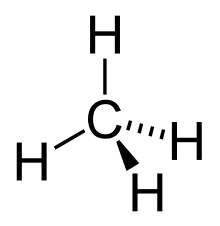Symmetry operation
In the context of molecular symmetry, a symmetry operation is a permutation of atoms such that the molecule or crystal is transformed into a state indistinguishable from the starting state. Two basic facts follow from this definition, which emphasizes its usefulness.
- Physical properties must be invariant with respect to symmetry operations.
- Symmetry operations can be collected together in groups which are isomorphic to permutation groups.
Wavefunctions need not be invariant, because the operation can multiply them by a phase or mix states within a degenerate representation, without affecting any physical property.
Molecules
Identity Operation
C1, rotation by 360°, is called the Identity operation and is denoted by E or I. In Identity operation, no change can be observed for the molecule. Even the most asymmetric molecule can undergo identity operation.
Reflection through mirror planes
A molecule that consists of a plane of symmetry possesses a mirror plane. When this plane of symmetry is parallel to the principal axis of the molecule (molecular z-axis), it is considered as a vertical plane (σv). If the plane of symmetry is perpendicular to the principal axis, then it is denoted as a horizontal mirror plane (σh). A dihedral mirror plane (σd) is the third type of plane of symmetry which bisects the angle between two 2-fold axes perpendicular to the principal axis. Through the reflection of each mirror plane, the molecule must be able to produce an identical image of itself.
Inversion operation
The inversion center is a point in space that lies in the geometric center of the molecule. During an inversion operation, all the atoms are moved through the center of the molecule in the opposite direction. As a result, all the cartesian coordinates of the atoms are inverted (i.e. x,y,z to -x,-y,-z).
Proper rotation operations
These are denoted by Cnm and are rotations of 360°/n, performed m times. The superscript m is omitted if it is equal to one. Here the molecule can be rotated into equivalent positions around an axis.
Cnn, n rotations 360°/n is also an Identity operation. That is a complete set of rotations around the principal axis results in identity.
Improper rotation operations
These are denoted by Snm and are rotations of 360°/n followed by reflection in a plane perpendicular to the rotation axis (σh). S1 is usually denoted as σ, a reflection operation about a mirror plane. S2 is usually denoted as i, an inversion operation about an inversion centre. When n is an even number Snn = E, but when n is odd Sn2n = E.
Rotation axes, mirror planes and inversion centres are symmetry elements, not operations. The rotation axis of the highest order is known as the principal rotation axis. It is conventional to set the Cartesian z axis of the molecule to contain the principal rotation axis.
Examples
Dichloromethane, CH2Cl2. There is a C2 rotation axis which passes through the carbon atom and the midpoints between the two hydrogen atoms and the two chlorine atoms. Define the z axis as co-linear with the C2 axis, the xz plane as containing CH2 and the yz plane as containing CCl2. A C2 rotation operation permutes the two hydrogen atoms and the two chlorine atoms. Reflection in the yz plane permutes the hydrogen atoms while reflection in the xz plane permutes the chlorine atoms. The four symmetry operations E, C2, σ(xz) and σ(yz) form the point group C2v. Note that if any two operations are carried out in succession the result is the same as if a single operation of the group had been performed.

Methane, CH4. In addition to the proper rotations of order 2 and 3 there are three mutually perpendicular S4 axes which pass half-way between the C-H bonds and six mirror planes. Note that S42 = C2.
Crystals
In crystals screw rotations and/or glide reflections are additionally possible. These are rotations or reflections together with partial translation. These operations may change based on the dimensions of the crystal lattice.
The Bravais lattices may be considered as representing translational symmetry operations. Combinations of operations of the crystallographic point groups with the addition symmetry operations produce the 230 crystallographic space groups.